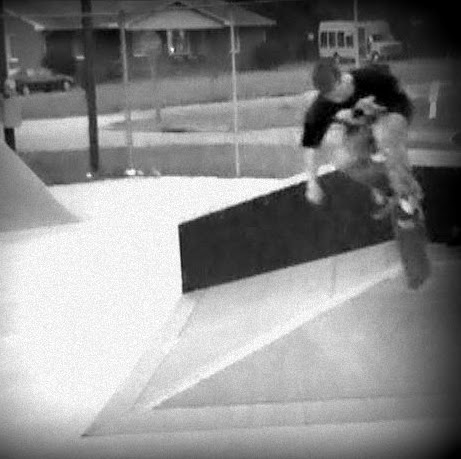Gary Devin Conley
age ~64
from Saratoga, CA
- Also known as:
-
- Gary D Conley
- Gary Grace Conley
- Gary D Onley
- Gary Donley
- Phone and address:
- 12021 Magnolia Ct, Saratoga, CA 95070
Gary Conley Phones & Addresses
- 12021 Magnolia Ct, Saratoga, CA 95070
- 18905 Ten Acres Rd, Saratoga, CA 95070
- 1455 Emory St, San Jose, CA 95126 • 4082807211
- 1804 Dry Creek Rd, San Jose, CA 95124
- Santa Clara, CA
- Fremont, CA
- Mountain View, CA
Work
-
Company:Kentucky River Properties LLC
-
Address:
Specialities
Contracts • Real Property • Employment Law • Real Estate
Lawyers & Attorneys

Gary Conley - Lawyer
view sourceOffice:
Kentucky River Properties LLC
Specialties:
Contracts
Real Property
Employment Law
Real Estate
Real Property
Employment Law
Real Estate
ISLN:
908246340
Admitted:
1979
University:
Northern Kentucky University, B.S., 1970
Law School:
Salmon P. Chase College of Law, J.D., 1979
Name / Title
Company / Classification
Phones & Addresses
Director
SOLFOCUS, INC
2711 Centerville Rd #400, Wilmington, DE 19808
2338 W Royal Palm Rd, Phoenix, AZ 85021
15300 El Camino Grande, Saratoga, CA 95070
2338 W Royal Palm Rd, Phoenix, AZ 85021
15300 El Camino Grande, Saratoga, CA 95070
Chairman And Founder
SolFocus
Renewables & Environment · Plumbing/Heating/Air Cond Contractor · Plumbing, Heating, and Air-Conditioning Contractors
Renewables & Environment · Plumbing/Heating/Air Cond Contractor · Plumbing, Heating, and Air-Conditioning Contractors
1841 Zanker Rd, San Jose, CA 95112
510 Logue Ave, Mountain View, CA 94043
6506237100
510 Logue Ave, Mountain View, CA 94043
6506237100
President
B2U SOLAR, INC
1455 Emory St, San Jose, CA 95126
3411 Silverside Rd, Wilmington, DE 19810
3411 Silverside Rd, Wilmington, DE 19810
President
H2GO, INC
Mfg Solar Cells
Mfg Solar Cells
1455 Emory St, San Jose, CA 95126
15345 Bohlman Rd, Saratoga, CA 95070
15300 El Camino Grande, Saratoga, CA 95070
4088880544
15345 Bohlman Rd, Saratoga, CA 95070
15300 El Camino Grande, Saratoga, CA 95070
4088880544
President
SOL FOCUS, INC
18905 10 Acres Rd, Saratoga, CA 95070
President, Director
Flyte Comm of Florida, Inc
333 W Santa Clara St, San Jose, CA 95113
Us Patents
-
Semiconductor Mount
view source -
US Patent:7545011, Jun 9, 2009
-
Filed:Aug 24, 2006
-
Appl. No.:11/509944
-
Inventors:Stephen Horne - El Granada CA, US
Gary D. Conley - Saratoga CA, US -
Assignee:SolFocus, Inc. - Mountain View CA
-
International Classification:H01L 27/14
H01L 21/00 -
US Classification:257414, 257431, 257432, 257E31127, 257E27123, 438 22, 438 29
-
Abstract:A mount for a semiconductor device has a first surface with at least one contact region and a second surface. The mount has a substrate to receive the second surface of the semiconductor device and a planar element. The planar element has an aperture sized to surround the semiconductor. A first surface of the planar element is mounted to the substrate and is located to surround the semiconductor device such that the semiconductor device is aligned by the aperture. The mount further has means for mounting the semiconductor device to the substrate in an aligned position. Some embodiments include a method of making and/or using such a mount.
-
Semiconductor Mount
view source -
US Patent:7855423, Dec 21, 2010
-
Filed:Feb 3, 2009
-
Appl. No.:12/365131
-
Inventors:Stephen Horne - El Granada CA, US
Gary D. Conley - Saratoga CA, US -
Assignee:SolFocus, Inc. - Mountain View CA
-
International Classification:H01L 27/14
H01L 21/00 -
US Classification:257414, 257431, 257432, 257E31127, 257E27123, 438 22, 438 29
-
Abstract:A mount for a semiconductor device has a first surface with at least one contact region and a second surface. The mount has a substrate to receive the second surface of the semiconductor device and a planar element. The planar element has an aperture sized to surround the semiconductor. A first surface of the planar element is mounted to the substrate and is located to surround the semiconductor device such that the semiconductor device is aligned by the aperture. The mount further has means for mounting the semiconductor device to the substrate in an aligned position. Some embodiments include a method of making and/or using such a mount.
-
Solar Concentrator Backpan
view source -
US Patent:7928316, Apr 19, 2011
-
Filed:Jun 5, 2008
-
Appl. No.:12/134172
-
Inventors:Peter Young - San Francisco CA, US
Stephen J. Horne - El Granada CA, US
Gary D. Conley - Saratoga CA, US
Martin Vasquez - Campbell CA, US -
Assignee:SolFocus, Inc. - Mountain View CA
-
International Classification:H02N 6/00
H01L 31/042 -
US Classification:136251, 136246, 136244
-
Abstract:The present invention is a contoured backpan for a solar concentrator array. The backpan has depressions integrally formed in its bottom surface for seating solar concentrator modules. The depressions, in combination connecting toughs, provide a structure which is able to support an array of solar concentrators. Optional stiffening members may be attached to fee backpan to provide additional structural rigidity, as well as to support a front panel for the array.
-
Concentrator Solar Photovoltaic Array With Compact Tailored Imaging Power Units
view source -
US Patent:8063300, Nov 22, 2011
-
Filed:May 26, 2005
-
Appl. No.:11/138666
-
Inventors:Stephen John Horne - El Granada CA, US
Gary D. Conley - Saratoga CA, US -
Assignee:SolFocus, Inc. - San Jose CA
-
International Classification:H02N 6/00
H01L 31/042
F24J 2/00
G02B 5/10 -
US Classification:136246, 126569, 359853
-
Abstract:Solar panels and assembled arrays thereof include a collection of relatively compact, high-capacity power units. Optical components of each power unit include a front window or surface glazing, a primary mirror, secondary mirror and receiver assembly. Primary and secondary mirrors are defined by respective perimeters, at least a portion of which may be substantially coplanar and in contact with the front window. Some primary mirrors are configured with a perimeter of alternating full and truncated sections, and are curved to a base portion forming a pilot hole therein. Receiver assembly mechanical components include an alignment tube for mating with the primary mirror's pilot hole and for housing a photovoltaic solar cell. A base plate provided adjacent to the alignment tube serves to radiate heat emitted by the solar cell, and in some embodiments an additional heat sink provides further passive cooling. A tapered optical rod also provided within the receiver assembly directs received sunlight to the solar cell where electrical current is generated.
-
Optical System Using Tailored Imaging Designs
view source -
US Patent:20060274439, Dec 7, 2006
-
Filed:Feb 9, 2006
-
Appl. No.:11/351314
-
Inventors:Jeffrey Gordon - Midreshet Ben-Gurion, IL
Daniel Feuermann - Midreshet Ben-Gurion, IL
Stephen Horne - El Granada CA, US
Gary Conley - Saratoga CA, US -
International Classification:G02B 5/10
-
US Classification:359859000
-
Abstract:Ultra-compact concentrators and illuminators that approach the thermodynamic limit to optical performance can be realized with purely imaging strategies. Two-stage reflector systems where each optical surface is tailored to eliminate one order of aberration—so-called aplantic designs are described. The contours are monotonic functions that can be expressed analytically—important in facilitating optimization studies and practical fabrication. The radiative performance of the devices presented herein is competitive with, and even superior to, that of high-flux nonimaging systems. Sample results of practical value in solar concentration and light collimation are presented for systems that cover a wide range of numerical aperture.
-
Concentrator Solar Photovol Taic Array With Compact Tailored Imaging Power Units
view source -
US Patent:20070089778, Apr 26, 2007
-
Filed:Dec 14, 2006
-
Appl. No.:11/638793
-
Inventors:Stephen Horne - El Granada CA, US
Gary Conley - Saratoga CA, US -
International Classification:H02N 6/00
-
US Classification:136246000
-
Abstract:Solar panels and assembled arrays thereof include a collection of relatively compact, high-capacity power units. Optical components of each power unit include a front window or surface glazing, a primary mirror, secondary mirror and receiver assembly. Primary and secondary mirrors are defined by respective perimeters, at least a portion of which may be substantially coplanar and in contact with the front window. Some primary mirrors are configured with a perimeter of alternating full and truncated sections, and are curved to a base portion forming a pilot hole therein. Receiver assembly mechanical components include an alignment tube for mating with the primary mirror's pilot hole and for housing a photovoltaic solar cell. A base plate provided adjacent to the alignment tube serves to radiate heat emitted by the solar cell, and in some embodiments an additional heat sink provides further passive cooling. A tapered optical rod also provided within the receiver assembly directs received sunlight to the solar cell where electrical current is generated.
-
Socket Mounting Of Component In An Optical System
view source -
US Patent:20080185040, Aug 7, 2008
-
Filed:Feb 1, 2007
-
Appl. No.:11/701601
-
Inventors:Lawrence Tom - Sunnyvale CA, US
Gary D. Conley - Saratoga CA, US -
Assignee:Sol Focus, Inc. - Palo Alto CA
-
International Classification:H01L 31/00
-
US Classification:136259, 136246
-
Abstract:In one embodiment, an apparatus includes a housing. The housing includes one or more units where each unit includes one or more optical elements. The optical elements are configured to concentrate electromagnetic radiation, such as light, from a larger area to a smaller focused area. The optical elements may be sealed in the housing. A removable device is included that is configured to be inserted into a unit. The removable device includes a photovoltaic cell that is configured to receive at least a portion of the concentrated electromagnetic radiation. The removable device is configured to be removable from the housing from a second side of the housing without breaking the seal on the first side of the housing. Accordingly, when the removable device needs to be removed, it can be removed without breaking the seal on the first side of the housing.
-
Solar Thermal Collection Apparatus And Methods
view source -
US Patent:20120312295, Dec 13, 2012
-
Filed:Jun 8, 2011
-
Appl. No.:13/155602
-
Inventors:Gary D. Conley - Saratoga CA, US
-
International Classification:F24J 2/05
B21D 53/06
F24J 2/24
F24J 2/12
F24J 2/48 -
US Classification:126652, 126694, 126676, 126663, 29890033
-
Abstract:A solar thermal collector includes a receptacle and a fluid conduit. The receptacle is evacuated to a subatmospheric pressure. The receptacle includes a window and a reflector facing the window. The window and the reflector are exposed to the subatmospheric pressure in the receptacle. The fluid conduit extends through the receptacle between the window and the reflector. The reflector concentrates solar radiation passing through the window onto the fluid conduit.
Medicine Doctors

Gary L. Conley
view sourceSpecialties:
Internal Medicine
Work:
Premier HealthNetBelmont Physicians
2451 Wayne Ave, Dayton, OH 45420
9372087396 (phone), 9372087375 (fax)
2451 Wayne Ave, Dayton, OH 45420
9372087396 (phone), 9372087375 (fax)
Education:
Medical School
Wright State University Boonshoft School of Medicine
Graduated: 1991
Wright State University Boonshoft School of Medicine
Graduated: 1991
Procedures:
Electrocardiogram (EKG or ECG)
Pulmonary Function Tests
Vaccine Administration
Pulmonary Function Tests
Vaccine Administration
Conditions:
Acute Sinusitis
Anxiety Dissociative and Somatoform Disorders
Atrial Fibrillation and Atrial Flutter
Diabetes Mellitus (DM)
Disorders of Lipoid Metabolism
Anxiety Dissociative and Somatoform Disorders
Atrial Fibrillation and Atrial Flutter
Diabetes Mellitus (DM)
Disorders of Lipoid Metabolism
Languages:
English
Description:
Dr. Conley graduated from the Wright State University Boonshoft School of Medicine in 1991. He works in Dayton, OH and specializes in Internal Medicine. Dr. Conley is affiliated with Miami Valley Hospital.
Classmates

Gary Conley
view sourceSchools:
Wickliffe High School Wickliffe OH 1984-1988
Community:
Juliana Bais, Joseph Weisinger

Gary Conley
view sourceSchools:
Portsmouth West High School Portsmouth OH 1990-1994
Community:
Bart Riordan, Mary Spencer, Davida Oakes, Pamela Jenkins

Gary Conley
view sourceSchools:
Plymouth High School Plymouth MI 1994-1998
Community:
Lynn Koza, Gordon Holland

Gary Conley
view sourceSchools:
Notre Dame High School Biloxi MS 1978-1982
Community:
D B, Armond Boudreaux, Jeffrey O'keefe, Hollie Krohn, Myles Murphy

Gary Conley (Gary Conley)
view sourceSchools:
Hammond High School Hammond LA 1996-2000, Warren Easton High School New Orleans LA 1996-2000
Community:
Florence Nelson, Dellie Spain, Tom Anderson

Gary Conley
view sourceSchools:
Spotswood High School Penn Laird VA 2000-2004

Gary R. Conley
view sourceSchools:
Morrow Elementary School Morrow OH 1958-1964
Community:
Charlotte Rainwater, Karen Landis, Harry Bourne

Gary Conley
view sourceSchools:
Nutter Fort Intermediate School Clarksburg WV 1980-1984
Community:
Kyla Webb, Summer Jones, Roxana Wolford, Tammy Moneypenny, Teena White, Brian Kummer
Flickr
Myspace
Googleplus

Gary Conley
Work:
Kroger
Education:
St.juliana

Gary Conley

Gary Conley

Gary Conley

Gary Conley
Relationship:
Single

Gary Conley

Gary Conley

Gary Conley

Gary Conley
view source
Gary Conley
view source
Gary Conley
view source
Gary Conley
view source
Gary Conley
view source
Gary Conley
view source
Gary Conley Jr.
view source
Gary Conley
view sourcePlaxo

Gary Conley
view sourceVice President / General Manager at Yale Materials...
Youtube
Get Report for Gary Devin Conley from Saratoga, CA, age ~64

















